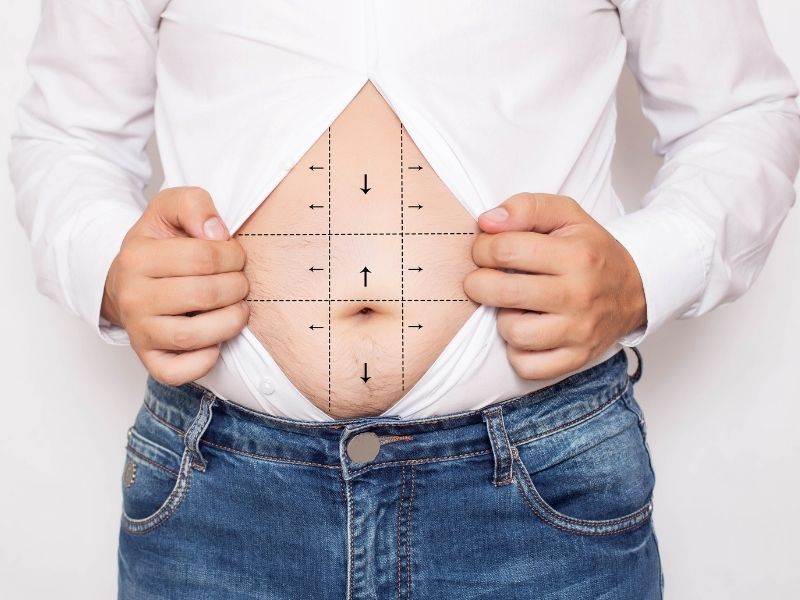Obesity surgery is performed with many different methods. These methods include gastric bypass, sleeve gastrectomy, biliopancreatic diversion, ajustable gastric band and devices that work by stimulating the vagus nerve.
Surgical and Non-Surgical Obesity Treatment Methods
Obesity treatment methods can be generally categorized as surgical and non-surgical. While surgical methods are generally preferred for severe obesity cases, non-surgical methods are used for milder obesity cases.
Surgical obesity methods can be listed as follows:
Gastric Bypass,
Sleeve Gastrectomy,
Biliopancreatic Diversion,
Adjustable Gastric Band
Non-surgical obesity treatment methods can be listed as follows:
Endoscopic procedures,
Exercise,
Behavioral therapy,
Medication
Sleeve Gastrectomy (Sleeve Gastrectomy)
The medical name for sleeve gastrectomy is sleeve gastrectomy. It is performed to reduce the size of the stomach. A large part of the stomach wall is removed. A thin tube-shaped stomach remains in the person's body. This procedure reduces the volume of the stomach. As a result of the decrease in volume, there is a decrease in appetite and quick satiety.
The aim of this procedure, which is applied to overweight and obese people, is to reduce the health problems that come with weight by losing weight. Sleeve gastrectomy surgery is performed as follows:
General anesthesia is given and the patient is put to sleep,
During this surgery, which can also be performed laparoscopically, most of the stomach is cut longitudinally and removed,
The remaining part of the stomach is formed into a tube or cylinder,
The incisions are closed.
In sleeve gastrectomy, the intestines are not interfered with. This means that nutrient absorption is less affected.

Gastric Band (Gastric Band)
In the gastric banding procedure, a band is placed in the stomach. Thanks to this band, the stomach shrinks and thus eating habits are reduced. Thanks to the band, the stomach is divided into two. It takes the shape of a small bag at the top and bottom and there is a band in the middle that squeezes the stomach. In this way, the stomach takes volume. Stomach clamp surgery takes place as follows:
The patient is anesthetized and the patient is put to sleep,
A thin flexible band is placed on the upper part of the stomach and its tightness is adjusted.
Thanks to this band, the stomach is divided into two.
The band is tightened so that the upper part remains a smaller bag.
The surgery is ended by closing the incisions.
Gastric Plication (Stomach Folding)
In the gastric tube procedure, folds are created in the stomach wall to make the stomach smaller. Gastric plication surgery is performed as follows:
General anesthesia is given,
The stomach is curved with a sewing thread,
These folds are fixed to the stomach wall,
The incisions are closed and the operation ends.
Since the stomach is not cut in this procedure, there are no changes in the gastrointestinal system. In this way, food is digested naturally.
Gastric Bypass (Gastric Bypass)
In a gastric bypass, part of the stomach is reduced in size. Its connection with the small intestine is changed so that some of the food is directly excreted. In addition to the decrease in stomach volume, the amount of absorption also decreases. The gastric bypass surgery procedure is performed as follows:
General anesthesia is performed,
It can be performed laparoscopically or open surgically,
A smaller stomach is created,
Part of the small intestine is cut off at a lower point to connect with the stomach pouch,
This new connection bypasses the stomach pouch and part of the intestine,
The nutrients pass directly into the next part of the intestine,
With a connection to another part of the remaining intestine, the absorbed nutrients pass to the next part of the intestine,
Normal digestion continues.

Duodenal Switch (DS)
Duodenal switch is a procedure that reduces the absorption of nutrients as well as stomach reduction. The stages of duodenal switch, which is a two-stage surgical operation, are as follows:
In the first stage, a gastric sleeve is created by reducing the size of the stomach. By reducing the stomach volume, less eating is achieved.
In the second stage, part of the small intestine is bypassed. Some of the nutrients are directly excreted and prevented from being absorbed by the body. This reduces the absorption of calories and nutrients.
Mini Gastric Bypass (MGB)
Mini gastric bypass is different from full gastric bypass in that a smaller area is bypassed. This is the main difference between them. In mini gastric bypass, a small stomach pouch is created. The small intestine is cut in such a way that it connects with the stomach pouch. The nutrients pass directly into the next part of the bypassed intestine.
Click here for information about Nutrition After Obesity Surgery.
At what weight does obesity surgery start?
Obesity surgery is applied for people who are severely obese. Severely obese people are those with a body mass index over 40 kg/m². It is also a procedure applied to people with a body mass index between 35-40 who have weight-related hypertension, sleep apnea, type 2 diabetes.
Who cannot have obesity surgery?
People with substance and alcohol addiction, people who cannot live the regular life required after surgery, people with serious psychiatric illnesses and people who are inconvenient to receive anesthesia cannot have obesity surgery.
How many hours does sleeve gastrectomy surgery take?
Gastric sleeve surgery can be performed laparoscopically and this procedure takes 1-2 hours.
How much weight can be lost with gastric sleeve surgery?
Usually 10% of the weight is lost in the first month after sleeve gastrectomy. This corresponds to between 10-25 kilograms. Weight loss is high in the first three months.
How many holes are made in laparoscopy?
In obesity surgeries performed laparoscopically, 3-4 holes are usually drilled.








